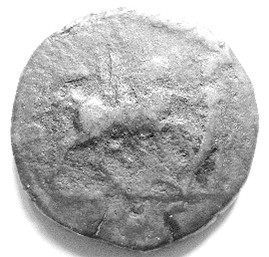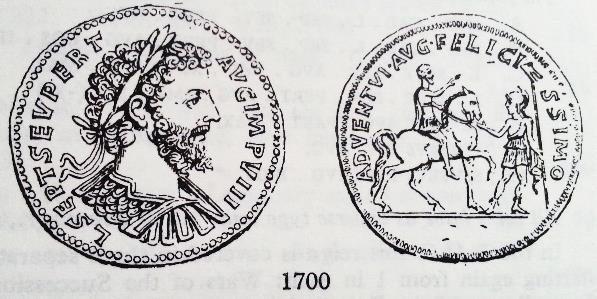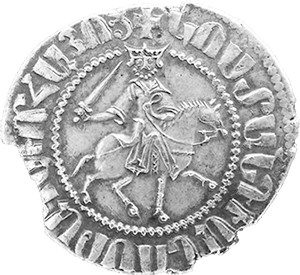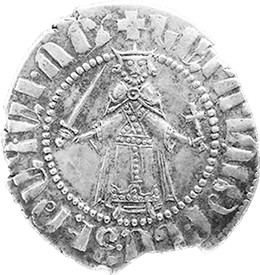
NOW Articles Written By Members
Bullion And Coin Tax Exemption – Act Now!
Is There A Twenty Cent Piece We Can Add To A Collection
Capped Bust Half Dollars: A Numismatic Legacy
U.S. Innovation Dollars: Our Most Under-Collected Coin?
My 2023 ANA Summer Seminar Adventure
In defense of the American Women's Quarters
A look back in numismatic history – the Hicksville Silver Dollar Hoard
The proofs so few of us collect: Jefferson Nickels
A look back in numismatic history – a story too good to be true
Kilroy promotes war bond sales
Just passing through a short-lived bank
The Kewaunee Line Encased Coin Folder
Lyman C. Draper: Collector, Historian, Genealogist
>> More articles in the Archive
For more NOW Articles Written By Members,
<< More articles in the Archive
Some Numismatic Recollections
by Leon A. Saryan #0100L
It seems that either you are a collector, or you are not. Many, if not most coin collectors tend to start at an early age. I was no exception. I first became aware of coins and postage stamps when I was age 9.
Many baby boomers got their start with World War II memorabilia—coins and paper currency brought home from Europe or the Far East by fathers who had served overseas. I was one of those boomers, but I missed out on the overseas stuff since my father worked stateside during the War as an inspector of war materiel. But my mother routinely received mail from her family in Lebanon. She used to give the stamps to her doctor, but at my urging she allowed me keep the stamps which became the nucleus of my stamp collection.
Neither of my parents thought much of my hobbies, and when I was growing up, excess cash needed to build a collection was in short supply (OK, non-existent!). When I asked for permission to visit the “stamp store,” my father frowned. “That’s not collecting,” he said, “that’s buying.” I was reminded to keep my enthusiasm for purchasing collectibles under control.
I grew up in northern Delaware in the 1950’s. Just a stone’s throw across the Delaware River in southern New Jersey, a counterfeiter named Francis Henning was making fake nickel five-cent pieces by the thousands. One day, I think it was in 3rd grade, I arrived in school to find several classmates bouncing nickels on a Formica desk top to see if they could identify one of the counterfeits. I don’t know if they found any, but later I was able to locate one for my collection.
In the summer of 1961 (when Roger Maris and Mickey Mantle were battling to break Babe Ruth’s home run record), my parents gave me a blue Whitman Mercury dime folder for my birthday. Soon, like every other kid my age, I was actively saving silver quarters and halves from circulation. If I needed cash I would simply raid my collection, removing coins with high mintages and then replacing them later with earnings from my newspaper route. Meanwhile, one of my collecting friends, Jon Rafal (who became a museum director), was buying as many US gold double eagles as he could afford for $30 each! (SMART!!)
One of the important contacts that I made in those days was with the well-known numismatist Jules Reiver. Mr. Reiver was nationally prominent as a leading author/collector/researcher of early American coins. It turned out that not only was he a subscriber on my paper route, but also I had a crush on his daughter! One day in 1963 I stopped at his house to collect his 42 cent weekly newspaper bill, and as I entered his home I saw a table with a huge pile of coins that he was working on. During our conversation I mentioned that I needed a Barber half dollar as the last coin for my Boy Scout coin collecting merit badge type set, and he promptly selected and gave me an example from his extensive collection. Later, I learned that during World War II he had played an important role in the invasion at Omaha Beach and the liberation of Paris.
First Ancient Coin
It was around this time that I obtained my first ancient coin. It was much different than the modern US and foreign coins that we were familiar with. It was the first ancient I had ever seen and I knew right away that I had to own it. I obtained it in trade for a large pile of stamps from Randy Turner, a friend of mine who was a budding archaeologist (and later became the State Archaeologist for Virginia). The obverse depicted the head of a Roman emperor and the reverse showed a figure with a headdress leading a horse by the bridle. It was worn nearly smooth, but unlike the relatively common late Roman bronzes, this coin was brassy and fairly large. The legend had long since disappeared and even the portrait was not readily recognizable. The brassy composition meant that it had to be a Roman sestertius or dupondius. By diameter it could have been either, but the light weight deceived me into thinking that I had the latter.


The challenge, of course, was to identify the coin. At the age of 10, with no reference works available and with not more than a trace of a legend, this was out of the question. So the coin sat quietly in a paper envelope for twenty years. In 1978, I dug it out and, after considerable research in reference books at the UW-Milwaukee library, I concluded that I owned a relatively scarce Roman provincial dupondius of Marcus Aurelius (161-180 AD) struck in Antiochia ad Hippum, a town in the Decapolis region east of the Sea of Galilee (present Jordan).
For the next 35 years I was satisfied with this assignment. A couple of years ago, it occurred to me that, with the advance of numismatic knowledge, it should be possible to confirm my attribution. I turned to the rare but definitive reference on this series, Coins of the Decapolis and Provincia Arabia by Fr. Augustus Spijkerman (thanks to my son Armen who was able to borrow the book for me from the Marquette University Library), but to my surprise no coin very similar to mine was illustrated or listed. I began to suspect that the tentative attribution I had made in 1978 might not be correct after all. I took the coin with me to a few larger coin shows looking for a clue from any of several ancient coin dealers who were in attendance. It seemed that, despite very substantial wear, the reverse type was distinctive enough that it should be possible to identify the coin. When one dealer suggested that the portrait might belong to Emperor Septimius Severus (193-211 AD), I began to recalibrate.

Drawing from Sear 'Roman Coins' 1974
Predictably enough, with more sleuthing, I found a drawing of the coin (in full detail) right under my nose in my personal copy of Sear’s Roman Coins and Their Values (1974), coin no. 1700. I had been misled by the coin’s light weight (15.41 grams) as well as by the extreme wear endured by the coin over the centuries. So, in fact, my mystery coin is a brass sestertius of Septimius Severus(193-211 AD, probably struck in 196), showing the emperor on horseback being led by a soldier with a bridle. The reverse is probably a reference to the emperor’s auspicious arrival in Rome and his military prowess. The lesson that I gleaned from this experience was that one could learn as much and have as much enjoyment with a well-worn, inexpensive coin as with a coin costing thousands of dollars. Attempting to identify poorly preserved ancient coins such as this one is an excellent way to sharpen one’s numismatic skills.
Armenian coins
All of these numismatic exercises were a prelude to my greatest interest. Those who know me well know that I have long been fascinated by the early coins of Armenia. Over the years, the scope of this interest has grown to include modern coins, medals, tokens, paper currency, financial documents, postal cards, artifacts and related collectibles. More than collecting, I enjoy the process of research, analysis, and discovery, enabling me to reveal and present new or unknown facts to the numismatic community.
One of my earliest childhood recollections was reading about Armenian history. I couldn’t have been more than 9 years old at the time. My parents had a fantastic book on their bookshelf, The History of the Armenian People, by the French scholar Jacques de Morgan. It had been translated into English from French in the 1940’s and published by the Hairenik Press in Boston. This book covers about 4000 years of history and is profusely illustrated with line drawings of ancient and medieval coins all related to Armenian history. Pictures of old coins, seals, churches, and monuments, most of them drawn by the author himself, jump out at the reader from almost every page. I can remember reading the book at night under my blanket using a flashlight. I drooled over the pictures, never imagining at that early age that I could own even one of those fascinating rare ancient coins, much less form a wide-ranging collection like that illustrated in this wonderful book. Only later did I learn that, besides his expertise in history and archaeology, de Morgan was an accomplished numismatic specialist.
Around that time I was on one of my regular visits to Delaware Stamp & Coin, a large, well-organized establishment in downtown Wilmington, foraging for additions to my stamp collection. There, under the glass, I saw a few stacks of old silver coins, with a notation that these were silver trams, attributed to two Armenian kings, Levon I (1198-1219) and Hetoum I (1226-1270). At that time, the asking price for these coins was an impossible $6 each, so I appealed to my parents to help me purchase a few. My father’s reaction was “nothing doing” and, as I didn’t have enough scratch to go forward on my own, I had no choice but to postpone the opportunity to start my Armenian collection. By the time I had enough money to purchase a few, the coins were already gone.
I should perhaps interject here, now that he has passed away, that I had some difficulty appreciating my father’s lack of enthusiasm for Armenian coins. My parents were great devotees of Armenian culture—language, art, literature, scholarship. They had Armenian books and artwork around the house, my mother would recite from memory the poems of our greatest writers. They worshipped the memory of their teachers, Levon Shant and Nikol Aghbalian. Outside his career as a chemist, my father was engagedin serious research on Armenian linguistics (and wrote a book on the topic). He once told me that instead of gathering stamps or coins, he was “collecting words.” True to his frugal habits (he grew to manhood during the Great Depression), he collected his words at no charge in Webster’s Dictionary.
My parents, of course, were preoccupied with the financial pressures of raising four children while giving them a well-rounded cultural education. They saw coins and stamps as merely a drain on family resources. But there may have been something else operating here. My dad once told me that in his youth, he had seen a tetradrachm of the famous Armenian king Tigranes the Great (95-56 BC), possibly at a museum in New York, but had not been impressed. Perhaps the coin did not, in his mind, measure up to the artistic standards of Armenia’s magnificent ancient churches, pictures of which graced the walls of our home. Perhaps he did not appreciate that, unlike a church that he could neither touch nor own, a coin of Tigranes could be held and admired in his hand.
By the time I was in my late thirties, my parents were reconciled to the fact that I was going to collect and study Armenian coins. My mother helped me translate my research into the Armenian language, and my dad eventually came around. Once, on a winter visit to Florida, he encountered dealer George Beach at a FUN Show in Orlando, who showed him a Roman gold aureus with an Armenian historical reference that he nearly purchased despite its hefty price tag. My father was eventually willing to admit that coin collecting was a fine, educational hobby, a vehicle for teaching and understanding the people of the world, their history, art, religion and culture.
In the late 1990s, I was invited to Boca Raton to present a lecture on the subject of Armenian coins and antiquities. I was excited that my parents were able to attend. Afterward, we all went together to a coin store where they purchased a medieval Armenian coin for me to add to my collection. And, in 1997 when independent Armenia issued its first gold coin bearing the image of the goddess Anahit, my father was among the first to secure several examples.
By the late 1970’s, with my formal education over and my scientific career underway, I was able to enlarge my collections. I was actively collecting Morgan dollars and 19th century US type. I also had acquired a few important Armenian artifacts, ancient coins, banknotes and medals. I soon made my earliest foray into medieval Cilician Armenian coins. My brother-in-law and I were attending a coin show near O’Hare Airport in 1982. I had just purchased a St. Gaudens double eagle for my gold type set, when I happened to pass by the table of a dealer from a nearby Chicago suburb. In his display case I saw two silver trams of King Levon I and, after a little negotiation, I secured the pair for $35. I took them home and examined them carefully. To my surprise, I found numerous small differences between the two coins, both in the design and the inscription. I had two distinct varieties of the same type! I soon obtained a copy of Dr. Bedoukian’s book on the series (Coinage of Cilician Armenia), and studied it aggressively, and learned that there were not just two but hundreds of varieties of the same type.
Over the next several years I became personally acquainted with many leading Armenian specialists in America and abroad—Dr. Paul Bedoukian, Jack Guevrekian, Yeghia Nercessian, Luther Eskijian, Khachadour Mousheghian and his daughter Anahit, Henry Sarkissian, Lena Garabedian, Armine Zohrabian, Edik Hovhanessian, Bagrat Sahakian, Ruben Vardanyan and others. To all of these friends I owe a debt of gratitude as they shared with me their enthusiasm, knowledge, experience and more, for these small messengers from the past. I feel proud that my own research has added in some small way to the body of knowledge about Armenian numismatics.
Dr. Bedoukian was a guiding light in my numismatic development. We first met in 1987. Like my father, as a child he had survived the 1915 Armenian genocide in Turkey. He and my dad were both industrial chemists, and the two often played backgammon together at our family home on Cape Cod. Bedoukian had enjoyed a good Armenian education. He began collecting at an early age (when old coins could be had for pennies) and built an enormous collection which he gradually gave away during his lifetime. His lasting contributions included several books and specialized studies published in leading periodicals, through which he was able to systematize the ancient and medieval Armenian royal series. He was responsible for introducing generations of collectors to the Armenian numismatic heritage. His generosity was legendary, and to me it hardly had any bounds.
Jack Guevrekian was another passionate collector. Jack could regale you for hours with jokes and stories, and although he did not do much writing, his interests and knowledge were very broad. Medals, paper currency, coins, tokens, manuscripts, rare books, seals, and artifacts all crossed his path. His method was always to own a rare piece for a while, and then allow another collector to share the same pleasure of ownership. Business contacts in Europe and the Middle East gave him unparalleled access to coins at prices that today’s collectors can only dream about. Many of the most interesting items in my collection, such as the virtually unique silver double tram of the medieval Armenian king Gosdantin I (1298-1299 AD), passed through Jack’s hands first.


Obv. and Rev. of the silver Double Tram of King Gosdantin I (1298-1299) from the author’s collection. Actual size 27mm 5.67g
In 1987 I made my first of several trips to Armenia, where I met the staff of the State History Museum—the Mousheghians, Henry Sarkissian, Lena Garabedian, and Armine Zohrabian. Around the same time I began collaborating with Yeghia Nercessian, founder and editor of the Armenian Numismatic Journal, which just completed its fortieth year of publication. All of these scholars, and many others, played an important role in my development as a researcher.
A few days after that O’Hare show, I called my parents to tell them that I had purchased a couple of ancient Armenian coins with my name inscribed on them. They asked me how much I had paid for the pair and I told them. “That’s nice,” they replied, “but don’t buy any more!!”
It was too late. I was hooked, and it’s been a great ride ever since.
Have an interesting numismatic topic you’d like to share with your fellow NOW members?
Send your article to evan.pretzer@protonmail.com today!!!